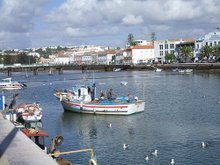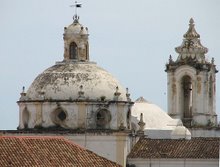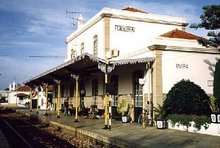
 The Moorish occupation of Tavira between the 8th and 13th centuries left its mark on the agriculture, architecture and culture of the area. That influence can still be seen in Tavira today with its whitewashed buildings, Moorish style doors and rooftops. A castle, two mosques and palaces were built by the Moors. The impressive seven arched "Roman bridge" is now not considered to be Roman after a recent archaeological survey, but originates from a 12th Century Moorish bridge. This was a good time economically for Tavira, which established itself an important port for sailors and fishermen. The area stayed rural until the 11th Century when Moorish Tavira (from the Arabic Tabira, "the hidden") started to grow rapidly, becoming one of the important (and independent) towns of the Algarve, then the South-Western extreme of Gharb al-Andalus (the West of Islamic Iberian territories).
The Moorish occupation of Tavira between the 8th and 13th centuries left its mark on the agriculture, architecture and culture of the area. That influence can still be seen in Tavira today with its whitewashed buildings, Moorish style doors and rooftops. A castle, two mosques and palaces were built by the Moors. The impressive seven arched "Roman bridge" is now not considered to be Roman after a recent archaeological survey, but originates from a 12th Century Moorish bridge. This was a good time economically for Tavira, which established itself an important port for sailors and fishermen. The area stayed rural until the 11th Century when Moorish Tavira (from the Arabic Tabira, "the hidden") started to grow rapidly, becoming one of the important (and independent) towns of the Algarve, then the South-Western extreme of Gharb al-Andalus (the West of Islamic Iberian territories).





































